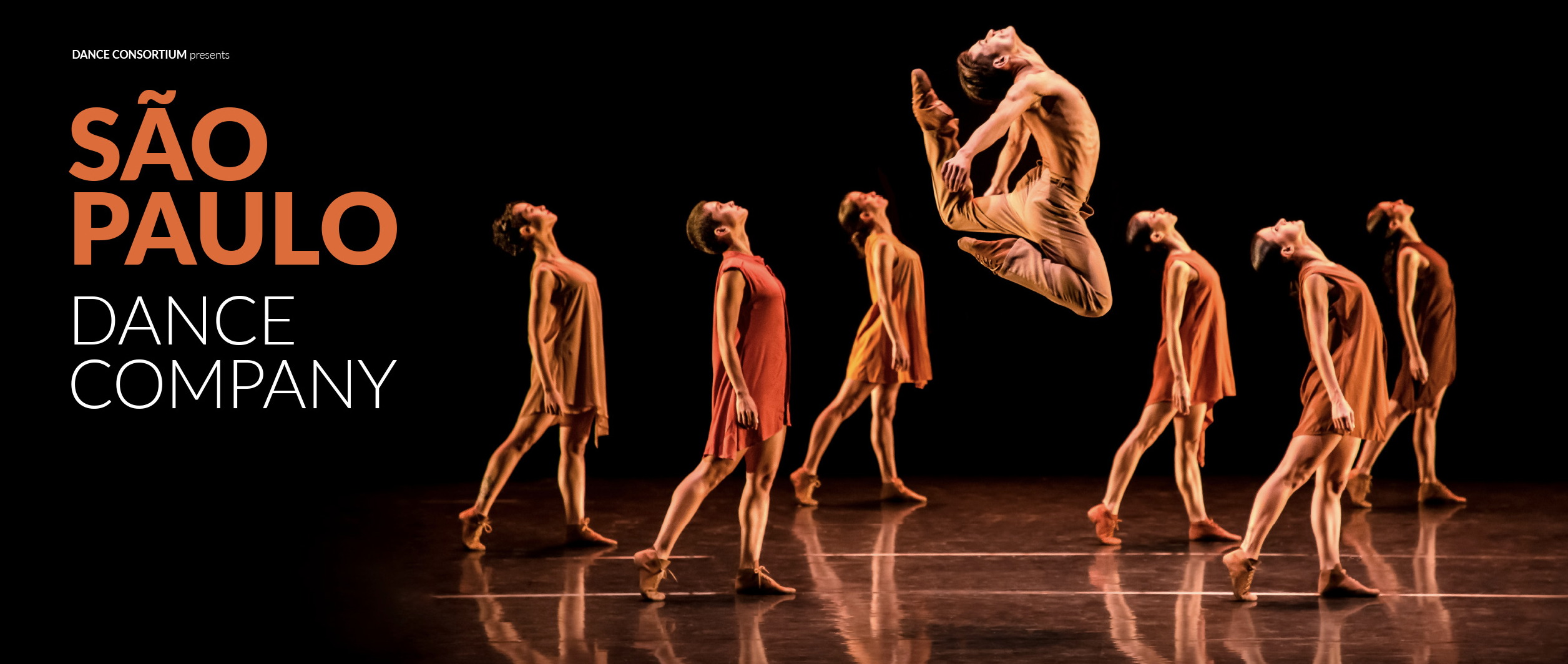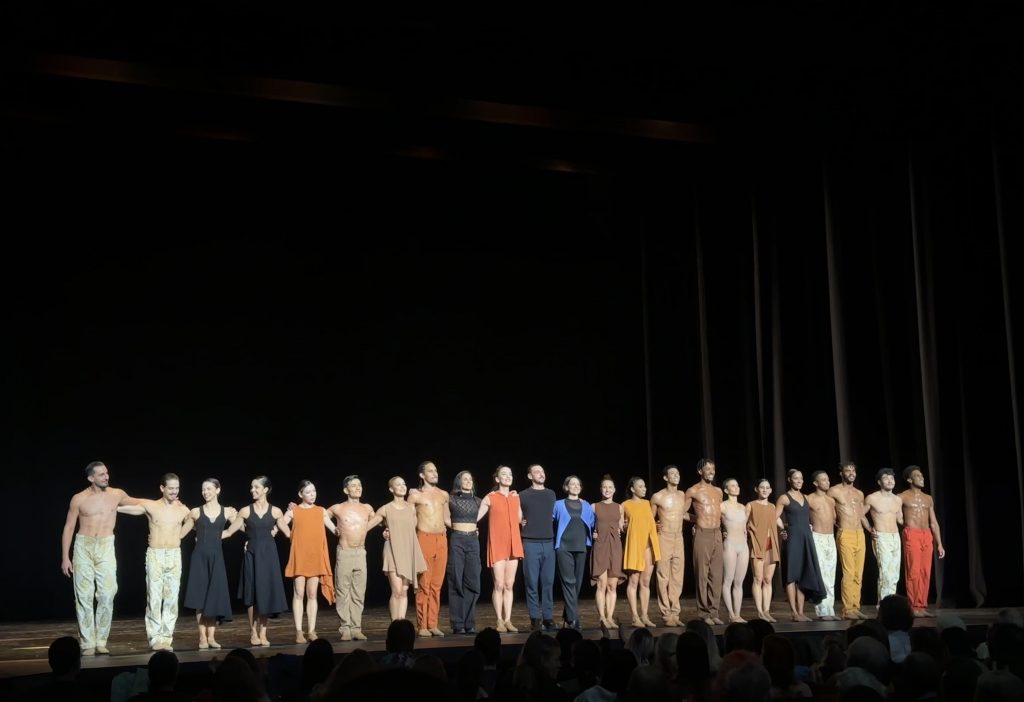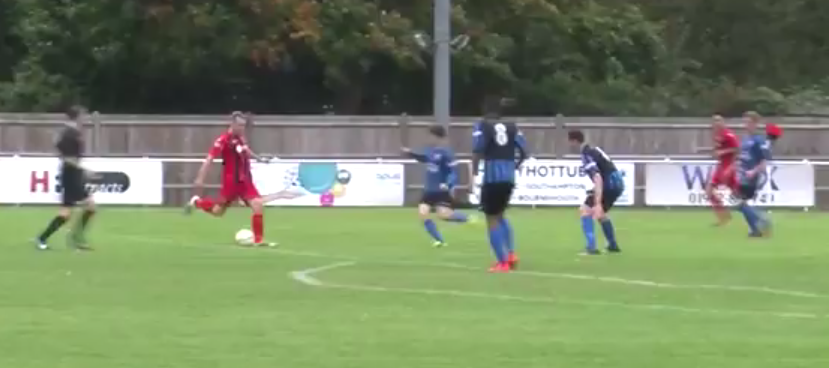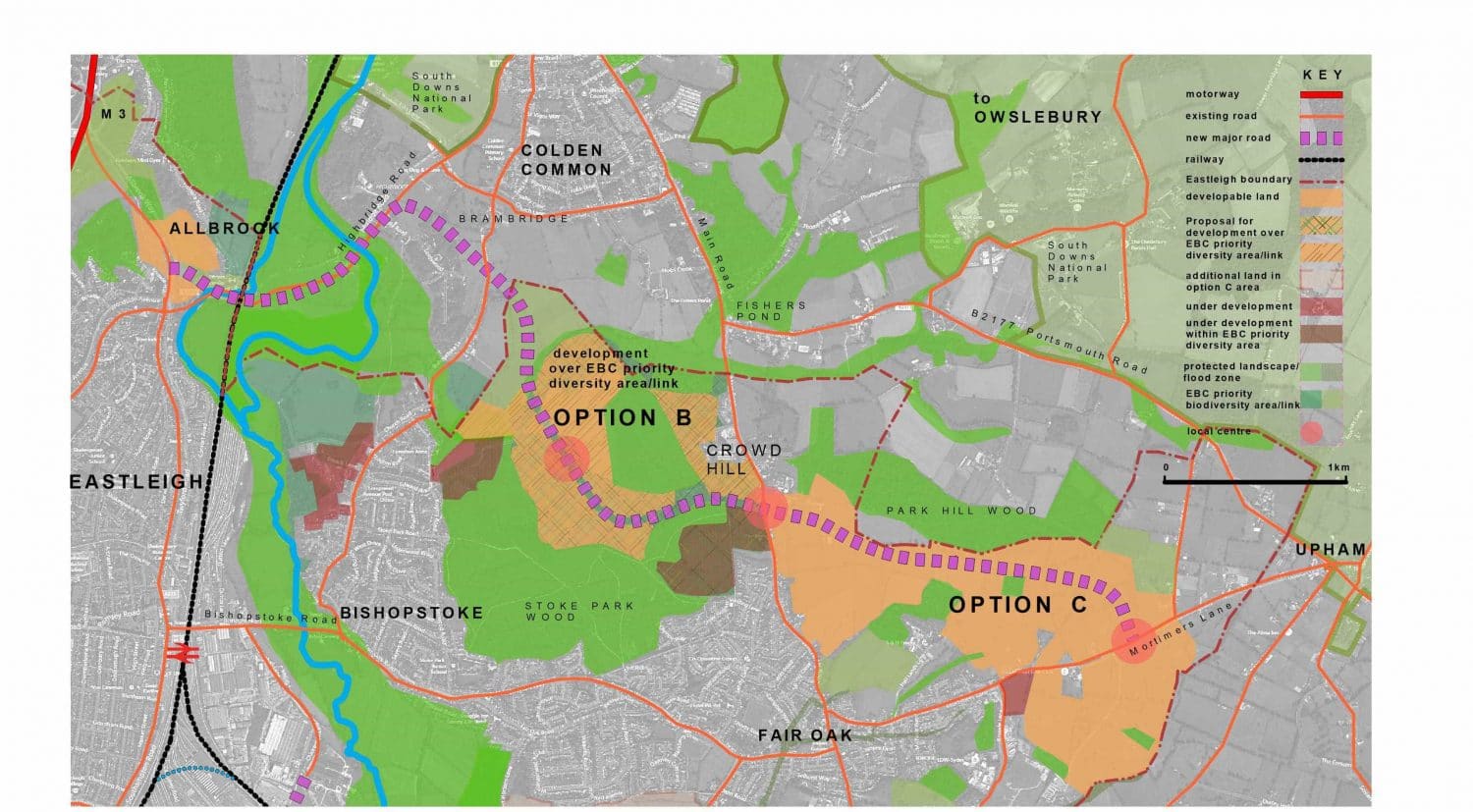Culture
REVIEW – São Paulo Dance Company at Mayflower Theatre

‘São Paulo Dance Company’ is the latest performance presented by the ‘Dance Consortium’ to grace Southampton’s Mayflower Theatre. ‘São Paulo Dance Company’ are Brazil’s finest dance company, fusing the elegance of classical ballet with the sensuality of Latin American dance. They are the forefront of South American contemporary dance supported and set up by the government of the State of São Paulo and led with artistic direction by Inês Bogéa. ‘São Paulo’ was created in 2008 and with them being a relatively new company comprised of only 22 dancers, it’s so exciting to see such a celebrated cultural performance on our stage thanks to the ‘Dance Consortium’.
Artistic Director, Inês Bogéa, has been leading ‘São Paulo’ since the very beginning and knows the company better than anybody. Being a dancer, filmmaker, and writer herself; it’s clear to see why she has been credited with having built the company which has performed to thousands internationally. This particular dance presentation is made up of three different incredible masterpieces, all telling a different story whilst presenting a sense of Brazilian flare and culture. The first is Goyo Montero’s emotionally charged ‘Anthem’, the second being Nacho Duato’s sensual ‘Gnawa’, and the third is that of Cassi Abranches’ colourful and flirtatious ‘Agora’.
As with any dance review I write, I think it only fair to write about each individual dance as its own piece. This is instead of picking out some key performances as that would just be impossible for a dance of this scale. On that note, I’d just like to say how incredible the whole company was, as they were all magnificent. All of the dancers clearly lose themselves in the moment and you can feel the passion and exchange of energy come across in that auditorium. As I’ve said before, these people aren’t just dancers – they’re athletes. So without further ado, let’s talk dance:
Anthem
This piece of dance was created in house in 2019 and is meant to reflect on life cycles and collective identities. This is inspired by songs that become hymns or – anthems – for each individual, group, generation or even nation. It’s very easy to say, that this is exactly what is portrayed through only the movement of the body. I found this piece to be raw and stripped back, using primal movements which sometimes made you feel uneasy – but there was some beauty about this. There was a constant theme of breathing, almost literally taking you through all of the highs and lows that life has to offer. It was showing the ebb and flows of life. The whole company didn’t leave the stage once, making some parts of ‘life’ feel cluttered and overwhelming, but others feel dispersed and controlled (especially when they would focus on the duets).
The movements were powerful and I particularly liked the use of height in heightening things upstage, but lowering things downstage to keep a central focal point. The simple tonal costume, made it feel as if the dancers were in the nude, adding to the simplicity and rawness of the piece. The use of light was also incredibly simple, but the use of shadows really helped add an extra edge on top of the dance. Sometimes we would see shadows, and sometimes when the dancers were backlit all we could see were silhouettes – really helping bring across that contrast of life. The use of individual hanging lights was also incredibly powerful when the dancers were all spaced out laying on the floor. To top it all off, the music from Owen Belton was the perfect score that helped tell the story from a heartbeat, to primal music, to an army theme, and back towards a heartbeat to symbolise the end of life cycle. The constant change in volume seemed to make it feel as if you were always on the edge of a panic attack and like dancer Yoshi Suzuki said, “its symbolising both the best and worst things that society can do”. Incredible piece of dance, a story beautifully told – bravo!
Gnawa
This dance is inspired by the mystical Islamic fellowship of the Gnawa people, who were brought to North Africa by the Berber as slaves. It’s meant to bring the heat and colour to the hypnotic and ritualistic music of North Africa. This piece had everything. It was chaotic and super energetic yet all of the dancers were together in unison. The group dances were mesmerising to watch and you couldn’t take your eyes off the way in which they were moving as a unit. The duet was also gorgeous. It was tranquil, calming and beautiful – a big contrast to how this piece started. The music had shifted to the noises of nature before the pace was brought up again at the end of the piece. The lights were incredibly simple but effective, the candlelight of the Berber stands out in particular here. The seamlessness between the increase and decrease in volume and how the dancers and lights would react was perfect.
I would say, trying to follow a particular story line to this piece was difficult. Without any background knowledge or information of it, you’d find it a lot harder to interpret. It wasn’t until afterwards that it started to properly click for me; it was all about the balance between religion and desire, heart or mind. Having said this however, it still doesn’t take away from the performance shown. You can still enjoy what is going on and interpret it in your own way. That’s the beauty of dance. A stunning piece of work.
Agora
This final piece was again created in house in 2019 and is all about time and exploring its rhythm. This piece was beautifully well-rounded, starting and ending in the exact same way. You could instantly tell it was themed all around time because of the underlying percussive beat, resonating with the tick of a clock. This was such an athletic and energetic piece, boasting an uptempo score from Sebastian Piracés, sharing the Afro-Brazilian culture through percussion, rock, and vocals. The lights throughout always managed to highlight a focal point to focus on and gave a little bit of extra feeling through colour. The soft, sensual, and flirtatious dancing from the women seemed to entice the flirtatious sexual temptation of the men, with their contrast of big and powerful movements looking as if they had gone feral.
It seems incredibly fitting that the word for ‘time’ in Portuguese is actually ‘tempo’, and the way the constant tempo changes through the use of ticking, or flowing water (as well as just the general music) keeps the flow of the dance from stagnating. Each dancer seemed to have a different tempo to each section of music with them all fit together perfectly. It’s like visually seeing a 5 part harmony coming together. The perfect finale for the night.

To sum up, ‘São Paulo Dance Company’ certainly brought their Brazilian heat, flare, energy and power to the stage – and its clear to see how they have pinned the name of Brazil’s finest dance company. You can really tell how hard the whole company work together, and how polished each of these dancers are. We are incredibly lucky in having the opportunity to see a company like this and that is all thanks to the ‘Dance Consortium’. I particularly like that some of the ‘Dance Consortium’ productions have a Q&A section afterwards, where you get to question some of the dancers and creatives behind what you have just watched. The aim of the ‘Dance Consortium’, is to get more people talking about dance and thus get more people watching it. I think what Artistic Director, Inês Bogéa, said in the the post show Q&A sums up what ‘São Paulo’ think perfectly, “Why can’t England and Brazil all talk about dance like we all talk about football? That is the end goal.”
‘São Paulo Dance Company’ are continuing on their UK tour until March 2024, and if dance or Brazilian flare is something that interests you then you should definitely find time to give them a watch. After all, what better time to watch them than during Brazilian carnival season? I can’t wait to see what the ‘Dance Consortium’ brings to Mayflower theatre’s stage next and I wish the whole company of ‘São Paulo’ the best of luck in the rest of their time in the UK.
Culture
Where confidence takes centre stage: How theatre transforms

Performing arts education isn’t just about learning to act, dance, or sing – it’s vital in developing many young people’s confidence and self-expression.
In a digital age where young people are spending more time on their devices than ever before, theatre education provides lifelong skills like communication, resilience and teamwork.
I caught up with some of the students at Artisan Theatre School, a Hampshire based youth theatre club, to see if this rings true.
Ben, 18, said his time at theatre school has “helped develop people skills” and made him “a more confident person”.
He urged other young people to “get involved and enjoy it!”
Daniel, 17, shared a similar sentiment saying his “confidence has grown a lot”.
Theatre education can open a whole world of new opportunities for young people, giving them the space to discover their talents and explore future career paths.
Lucy, 17, has attended Artisan Theatre School for nine years and said: “I want to be a performer in some capacity.”
She added: “That’s my dream because of Artisan.”
Emma, a singing teacher at the school, said performing arts education is “beneficial to anyone,” not just those pursuing it professionally.
She added it can be especially valuable for children with SEN, helping them build confidence, improve communication, and “come out of their shell” in a supportive environment.
Unfortunately, despite its benefits, arts education is not guaranteed for every young person.
Cuts to funding over the last decade has had a significant impact, limiting access to creative learning opportunities.
The Cultural Learning Alliance’s 2025 report reveals a 42% decrease in Creative Arts based GCSE entries since 2010, and a 27% decline in the number of Arts teachers.
Sam Blackwell, principal and founder of Artisan Theatre School, said arts education is “really important” and that “they don’t do enough of it in schools”.
She explained that her vision in creating the school was to “give back more to kids and get them being confident”.
To help fill the gaps left by reduced arts provision in schools, Sam plans to introduce additional classes and offer increased opportunities for her students to learn from industry professionals.
Culture
And we all keep dancing for it can’t get any worse (90s/00s)

The Shakespearean nature of Tony Blair’s time as Prime Minister is something that had never been seen and his obsession with “the spin” that had won him the 1997 election and made him one of the most popular prime ministers when entering office.
With large proportions of the public optimistic for his premiership incoming.
A fall from grace would ensue much like Macbeth.
It would be cruel and untrue to reflect on Tony Blair’s premiership to say that it was a complete failure, especially as many still see him as one of the best PMs the UK has ever had.
Since one of the biggest landslides in UK election history in 1997, he was able to push through many socialist policies without much of a hassle: inflation was low, crime was down by a third, children were achieving some of their highest results ever in school, thousands more students were going to university, a million pensioners and three million children had been taken out of poverty, the quality of the air, beaches, and drinking water was as clean as before the industrial revolution.
However 9/11 changed everything. The era of youthful optimism and rebellion has been replaced by what a lot of thinkers call post-post modernism.
At site Zero, George Bush claimed that “those who are responsible must be brought to justice.”
He outlined Cuba, Iran, Libya, Syria, North Korea and most importantly Iraq.
Once the troops stepped into Iraq, it was the start of a domino effect that quickly decimated Blair’s time as PM.
Unlike Kosovo and Sierra Leone, Britain’s involvement in Iraq did not have the public’s support.
In his book The Prime Ministers, Steve Richards remarks that Tony Blair had not assumed any cabinet position in the lead up to his premiership and asks:”What if Blair had been foreign secretary? at least he would’ve seen, and interpreted intelligence – an explosively contentious issue in the run-up to the Iraq War.”
And then, the day after London had been announced as the host of the 2012 Olympics, on the 6th of July 2005, 7/7 happened.
Four terrorists detonated bombs on public transport – 52 killed and 784 were injured.
When times get tougher and life gets sadder, what do people do? Dance to forget
Prince William and Kate were leaving a Chelsea nightclub at 3am, Prince Harry was partying with Kanye West and getting into a scuffle with photographers at 4am.
The 2000s club scene was here and everyone was taking part; it was loud, it was abrasive, and it was here to stay.
Since the introduction of the stifling 1994 Criminal Justice Act, which is considered to have brought the illegal rave era largely to a close, “free parties” were the new get-around of the law: Student clubs offering “buy one, get three free” on alcopops and 50p doubles for an hour.
Halls bars were £1.20 a pint. Artists like LCD Soundsystem, Missy Elliot and Rihanna began their rise to fame with dirty, booming soundscapes that captured the drug-fuelled atmosphere of clubs as everyone dances to a beat that never seems to end, drenched in sweat.
Films like Trainspotting capture the allure of 2000s clubbing but the grim reality, drugs have found their way into the club scene.
Much like the Oasis album Standing on the Shoulder of Giants is described as Oasis’ “come down album”, the 2000s was a comedown era of clubbing.
The times were sad, but the music got louder?
As David Cameron’s government entered Number 10 Downing Street in 2010 and ushered in 14 years of austerity, where exactly would clubbing culture go with almost all clubs closing….
Culture
REVIEW: Sigrid – There’s Always More That I Could Say

2 out of 5 stars
A disappointing third album filled with negativity
In all honesty, I was late to Sigrid’s party.
I started following the Norwegian pop star in 2023 when she had already released two albums and completed a slew of EPs and international tours.
In no time at all, I was captivated by her rasping tones, funky rhythms, and cool electronic synths.
When news broke that her third album would be releasing on 24 October, it was no surprise to find myself listening and assessing it…
Jellyfish is the first single and the most lighthearted. I like it.
It’s a nice story about two people meeting at a dance and kindling a relationship.
Sigrid sings in a syncopated rhythm, giving a jazzy tone to the tune.
For the first time in her career, she includes a flute.
Cold, gritty, grim
It plays a flourish at the beginning but I can’t hear it throughout the rest of the track. It would be good to hear more of the flute in future.
Fort Knox is single number two. As the name suggests, this is a cold, gritty, grim song about a woman betrayed by her man.
This betrayal cuts so deep that she has retreated into her shell to “lock my love up in… Fort Knox”.
I enjoyed the dramatic, dark nature here, especially the war cry chorus throughout the song.
Towards the end, you would think the song has finished before it plays one more crescendo of strings to cap things off. I thought that was unnecessary.
The third single, Two Years, is written from the perspective of the woman’s boyfriend, another new departure for Sigrid.
He has been chasing for that exact period of time. It’s a cheery song with a strong beat, despite the desperate lyrics like: “What are you running from? / Why did you let me go?”
I’ll Always Be Your Girl is another sad song of frustration and heartache caused by a rowdy, hot-headed partner.
It is sung very well, especially the pleading chorus line, and the drum-guitar combination gives me something to nod along to.
Unconventional energy
Do It Again is the most unremarkable song on the album.
There is a good guitar and drum track, however the story again is quite predictable for Sigrid (being tempted to rekindle on old flame relationship).
Kiss The Sky returns to more unconventional energy which is great.
A lovely fade into the track leads into the main verses.
This time, Sigrid is speaking her verses with a distorted effect rather than singing them. It sounds good and complements her natural raspiness.
A strong guitar riff carries us through the bridge. The electronic synths make this seem like a 1980s dance track.
It’s only the lyrics that make this song a story of disappointment between lovers.
There is sexual innuendo in Hush, Baby, Hurry Slowly.
You could interpret it as a man and woman deciding whether to move forward with their relationship.
You could see it as partners deciding whether to have sex or not.
As a result, it’s an interesting song and makes you listen to try and work it out.
The structure shakes things up by starting with the chorus fading in.
The song ends with the melody slowing down and lowering in pitch, reflecting the title in musical terms.
The title track is the obligatory solo piano song.
Sigrid has had at least one piano focused song in all albums.
This is the most beautiful song in the album, featuring solo piano and a nice resonance on the voice.
The lyrics still contain tensions between people, like “giving…my worst” as a girlfriend.
Nevertheless, this is my favourite song from this year’s collection.
The penultimate track is also the longest in the album.
Have You Heard This Song Before picks up the energy from the previous song with a predictable but welcome mix of drums and synths.
The lyrics are pretty hopeful in tone about wanting to spend time with your partner. This is the most positive track on the album.
The last song, Eternal Sunshine, is a conventional finale song.
It has a regular beat and instrumentation.
It is another song built out of frustration with a partner – she wants to “drink” him out of her mind.
It would have been nice to have something different to end on – maybe a different topic.
This is the shortest album Sigrid has released. That is disappointing.
There are 10 songs in only 31 minutes.
I would have expected the usual 12 tracks or more.
The previous albums managed it fine.
Sucker Punch (2019) and How To Let Go (2022) contained 12 songs. The Special Edition of How To Let Go added 15 songs on top of the originals.
This album differs from the last two in that every song but one is constantly loud, energetic, and pumping.
I would have preferred more balance between softer and pounding songs.
How To Let Go had more positivity in it, such as singing in a taxi, body-confidence in the mirror and making the most of life.
This album has replaced that with disappointment and frustration.
It is the album with the most “explicit” songs – never before have we had an album with so much swearing.
I hope that is toned down in future.
Here’s hoping that the next album is more positive, unconventional and creative.
Perhaps that will come out in three years, like the others.
There’s always more that Sigrid could say (sorry, that was a terrible joke).
-

 Football9 years ago
Football9 years agoFootball – Winchester City vs Didcot Town
-

 Community9 years ago
Community9 years agoWinnall community association renovated
-
Community8 years ago
Hampshire’s frontline services at risk
-

 Hampshire8 years ago
Hampshire8 years agoUniversity of Winchester Parking Trouble
-
Community8 years ago
Knight Bus unveiled at school
-

 Community8 years ago
Community8 years ago‘Controversial’ new plans take shape in Eastleigh
-

 Winchester News Online8 years ago
Winchester News Online8 years ago#MiracleMissy Update
-

 Bulletins7 years ago
Bulletins7 years agoWINOL 20 November 2018
